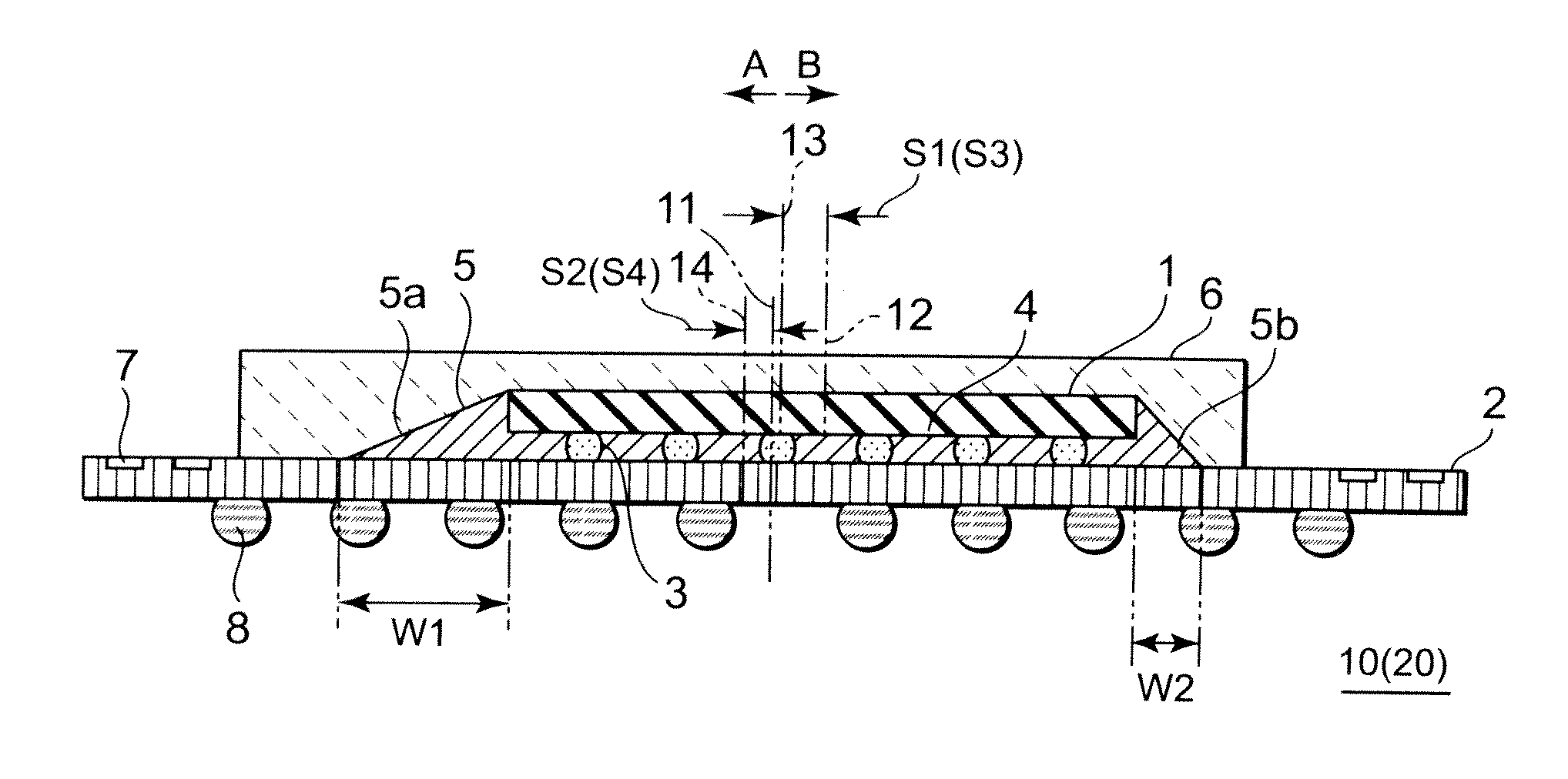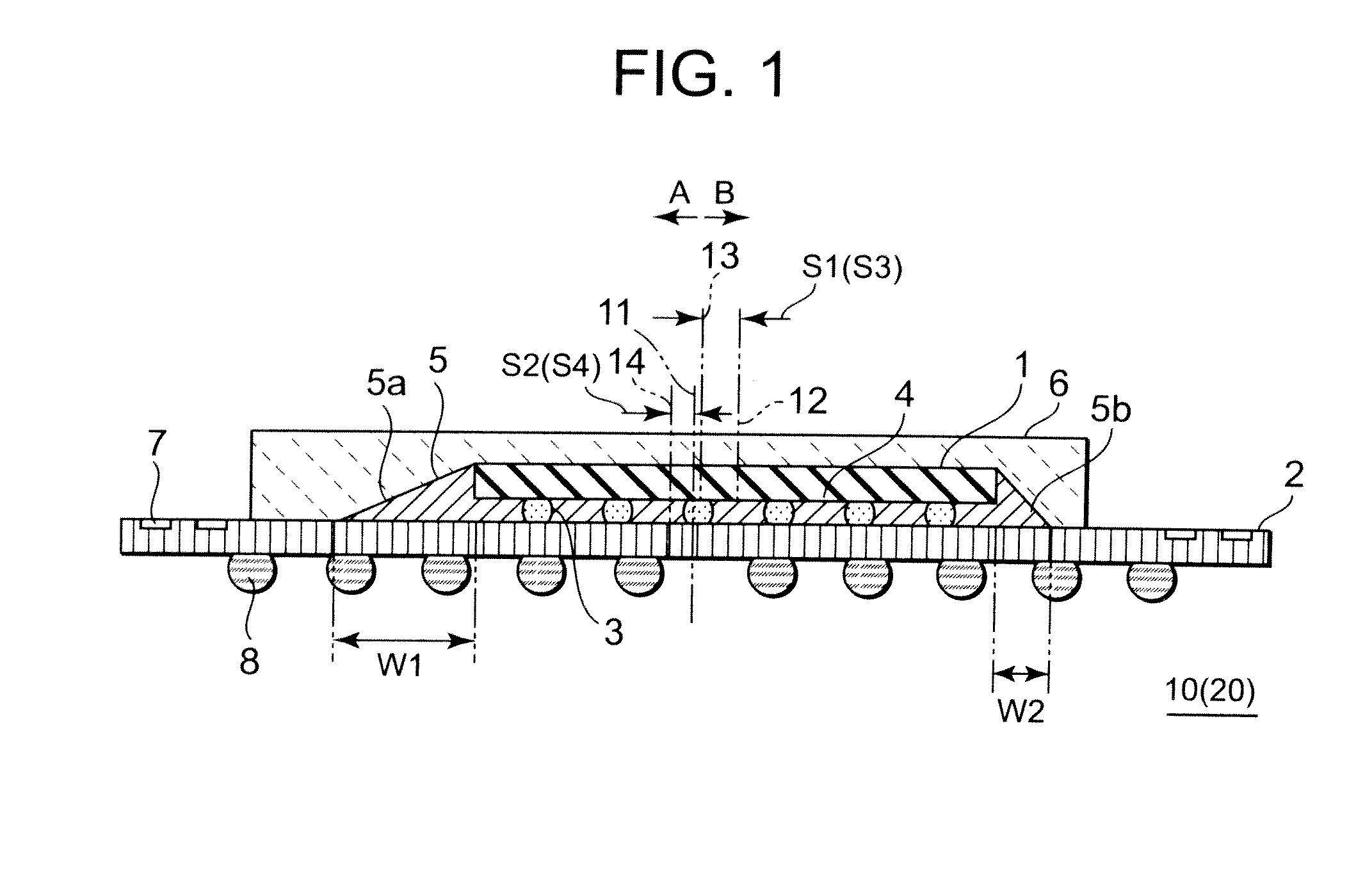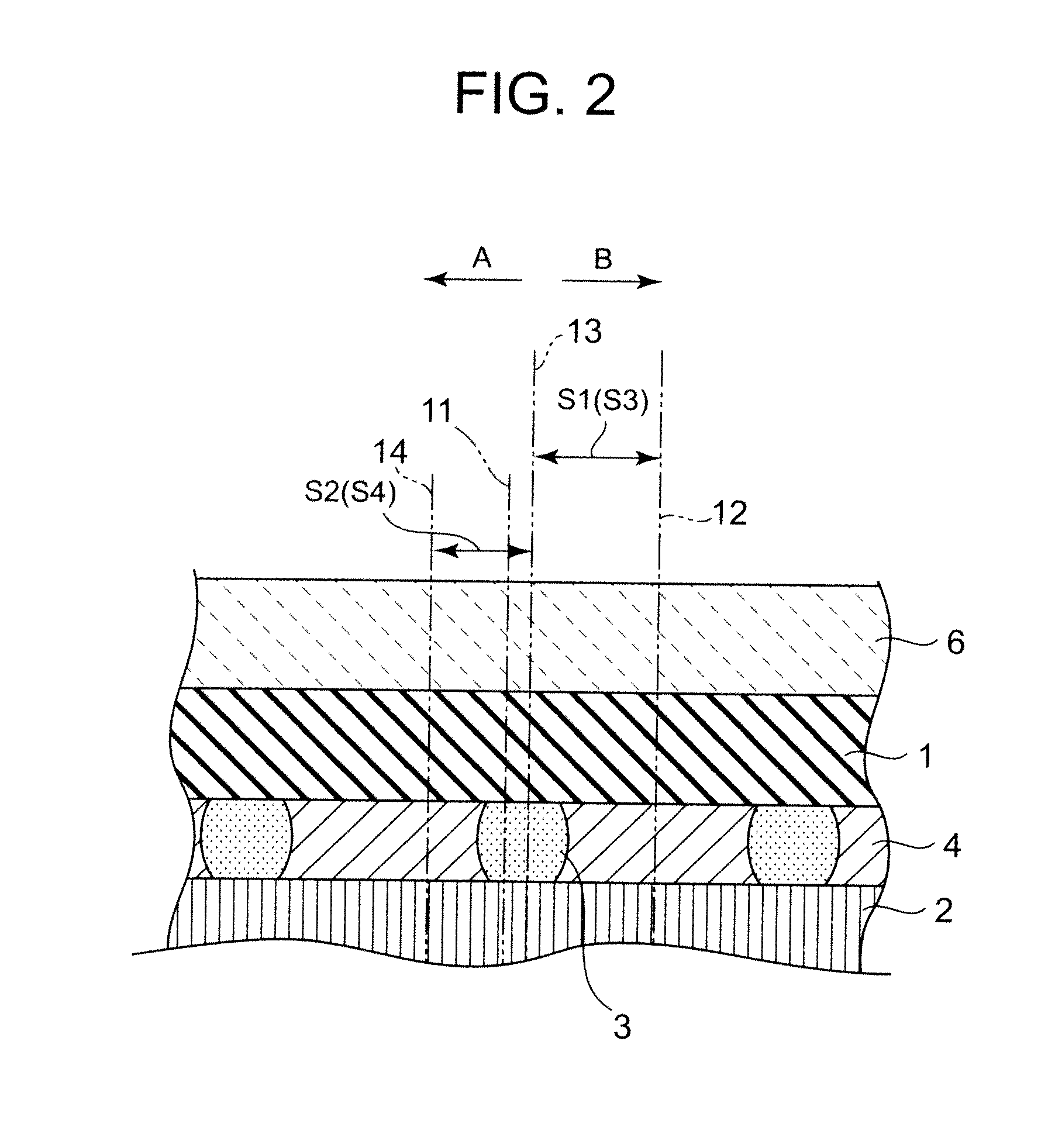Semiconductor device and method of manufacturing the same
a semiconductor device and semiconductor technology, applied in the direction of semiconductor devices, semiconductor/solid-state device details, electrical devices, etc., can solve the problems of asymmetrical behavior of the bow of the package, loss of thermal stress balance in the interior of the package, and adverse effect of the mounting of the semiconductor device, etc., to achieve the effect of suppressing the extent of the bow of the semiconductor devi
- Summary
- Abstract
- Description
- Claims
- Application Information
AI Technical Summary
Benefits of technology
Problems solved by technology
Method used
Image
Examples
first embodiment
[0067]FIG. 1 is a sectional view of a semiconductor device 10 of the first embodiment.
[0068]FIG. 2 is an enlarged view of an essential portion of FIG. 1. FIGS. 3 and 4 are plan views of the semiconductor device 10 of the first embodiment. FIG. 4 shows the action (a movement line 18) of an underfill resin injection nozzle (not shown) during the formation of an underfill resin 4. FIG. 5 is an enlarged view of an essential portion of FIG. 3. Incidentally, FIGS. 3 and 4 show the condition before the singulation of each semiconductor device (package) 10. FIGS. 6A to 6E are plan views showing the flow of a series of steps to explain the manufacturing method of the semiconductor device of the first embodiment.
[0069]The semiconductor device 10 of the present embodiment includes a wiring substrate 2, a semiconductor chip 1 mounted on the wiring substrate 2 in such a manner that one surface thereof is opposed to one surface of the wiring substrate 2, and a first resin (an underfill resin 4) w...
second embodiment
[0113]FIGS. 7 and 8 are plan views of the semiconductor device 20 of the second embodiment. FIG. 9 is an enlarged view of an essential portion of FIG. 7. FIG. 8 shows the action (a movement line 18) of an underfill resin injection nozzle (not shown) during the formation of an underfill resin 4. Incidentally, FIGS. 7 and 8 show the state before the singulation of each semiconductor device (package) 20. FIGS. 1 and 2, which were described in connection with the semiconductor device 10, serve also as sectional views of the semiconductor device 20.
[0114]The movement line 18 shown in FIG. 8 is a movement line of a leading end position 17 of an underfill resin injection nozzle (not shown) during the formation of the underfill resin 4 in the case of this embodiment. This embodiment is a case where, as shown in FIG. 8, the underfill resin 4 is injected into the gap between a board 2 and a semiconductor chip 1 while the underfill resin injection nozzle is being moved in a manner of the lette...
third embodiment
[0131]FIG. 10 is a sectional view of a semiconductor device 30 of the third embodiment. FIG. 11 is an enlarged view of an essential portion of FIG. 10. FIGS. 12 and 13 are plan views of the semiconductor device 30 of the third embodiment. FIG. 13 shows the action (a movement line 18) of an underfill resin injection nozzle (not shown) during the formation of an underfill resin 4. FIG. 14 is an enlarged view of an essential portion of FIG. 12. Incidentally, FIGS. 12 and 13 show the condition before the singulation of each semiconductor device (package) 30.
[0132]As is apparent from FIGS. 10 to 14, the third embodiment differs from the first embodiment only in the point that the amount of deviation S2 of the center position 14 of a resin for encapsulation 6 from the center position 13 of a board 2 is 0. In other respects, the third embodiment is the same as in the first embodiment.
[0133]According to the third embodiment, the same effect as in the first embodiment is obtained.
PUM
 Login to View More
Login to View More Abstract
Description
Claims
Application Information
 Login to View More
Login to View More - R&D
- Intellectual Property
- Life Sciences
- Materials
- Tech Scout
- Unparalleled Data Quality
- Higher Quality Content
- 60% Fewer Hallucinations
Browse by: Latest US Patents, China's latest patents, Technical Efficacy Thesaurus, Application Domain, Technology Topic, Popular Technical Reports.
© 2025 PatSnap. All rights reserved.Legal|Privacy policy|Modern Slavery Act Transparency Statement|Sitemap|About US| Contact US: help@patsnap.com



